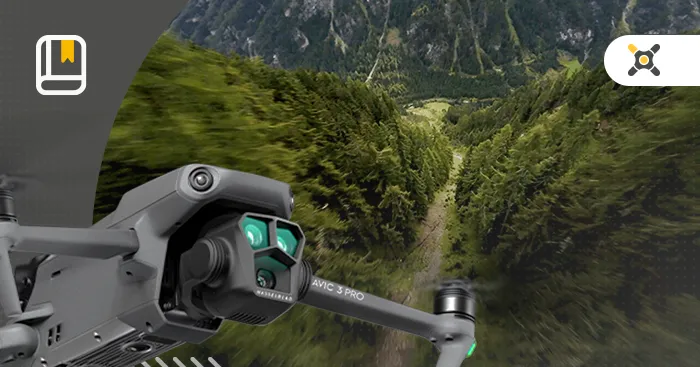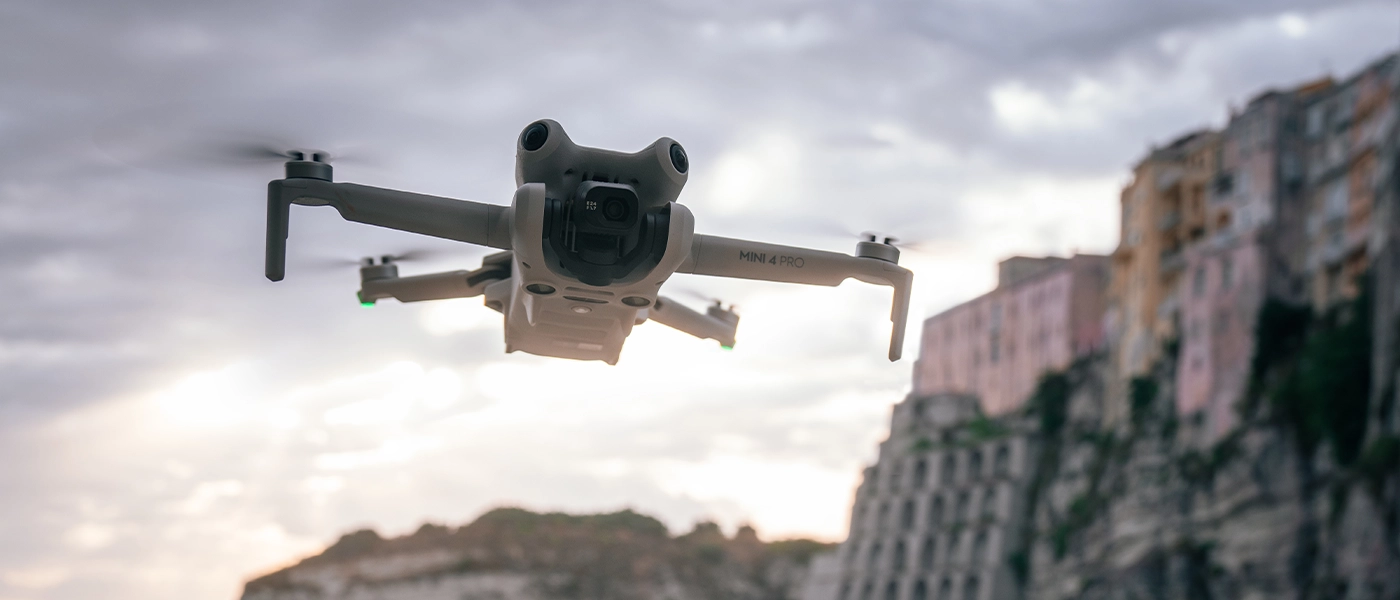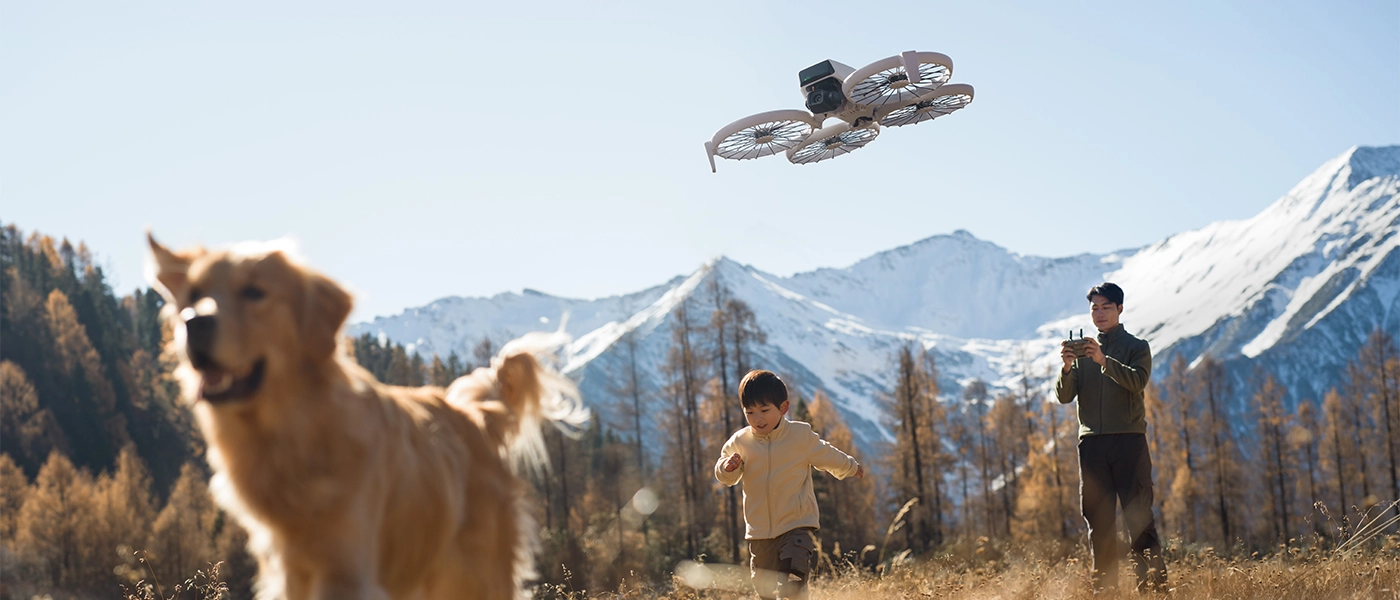Filming with a drone - 8 useful tips


Capturing videos with a drone is a chance to capture unique aerial shots. Current equipment provides the opportunity to capture images in very high quality - however, in order to get professional results, you need to take care of several important aspects. Issues such as the choice of device, camera settings, flight technique or editing method can have a huge impact on the effect of the. What to keep in mind?
1. First of all - choose the right drone

Although many of the most popular drones impress with their capabilities, not all of them will be suitable for professional filming. While devices from the most popular manufacturers, such as. drones DJI, offer good image quality, while stabilization or the ability to control individual parameters may leave a little to be desired. For this reason, in order to obtain high-quality footage, it is worth betting on filming with drones such as DJI Mini 4 Pro or DJI Mavic 3. These are solutions that feature great sensor quality, long battery life and advanced recording modes that make filming much easier. When choosing equipment, you should also pay attention to parameters such as lens resolution, sensor size, stabilization options or compatibility with ND filters.
If you're still wondering which drone will be the best choice for filming, we've prepared a detailed ranking that can help you decide. In the article "Best drones 2024 - drone ranking to wrap up the year" we have compiled the most popular models, discussing their key parameters and capabilities.
2. Plan your flight before filming
Good drone filming doesn't start with the flight itself - the planning stage is just as important. Before each flight, you need to check the m.in. weather forecast: strong wind, rain or dense fog can affect the stability of even the best drones, making it impossible to film smooth shots. In addition, you should make sure that you can legally fly in a particular place - especially in the vicinity of buildings or aviation infrastructure facilities, there may be some restrictions that require prior verification. Applications such as DJI Fly or DroneTower allow you to conveniently check such issues. It is also worth bearing in mind that filming will yield more impressive results when different heights and viewing angles are taken into account - is another factor that is good to analyze during planning.
3. Proper drone camera settings - the key to professional filming
Automatic camera settings are often sufficient for standard shots, but professional drone filming usually requires taking control of the parameters. The first option to check is the appropriate resolution - on some models, individual choices may also limit the number of frames per second, making it necessary to consider whether detail in shots or dynamic range is more important. When filming, exposure should always be adjusted manually to avoid overexposure and underexposed frames. Hand in hand with exposure must also go good white balance settings, adjusted for the current lighting conditions.
If you're interested in drone photography in addition to filming, check out our article "Drone photography - the 3 most common beginner mistakes". From it you will learn how to avoid the most common pitfalls and from the beginning to take pictures that look like from a professional session.
4. Stable, smooth flight

We've got the hardware issues behind us - it's also worth looking at the flight mechanics themselves. One of the most important aspects of professional drone filming is the smoothness of the shots. The drone's movements should not be abrupt and unnatural - as a result, filming requires quite a bit of practice. Special modes come to the rescue (e.g., Cinematic in drones DJI) that slow down the speed of drones, providing more control over maneuvers. When filming, also avoid sudden changes in direction and record longer takes - even if only part of the sequence is used, in this way you can get more freedom for editing and editing.
5. Remember the right frame composition
When filming with a drone, it is important to pay attention not only to the main subject of the video, but also to the the composition of the entire frame. Much in this regard depends on the specific shot - in some cases, recording from behind an obstacle, such as a tree, building or rock, can create an interesting effect of revealing the frame, while in others, a better choice will be the absence of distracting elements. To get the best results from filming with a drone, it's also a good idea to familiarize yourself with recording techniques and composing frames.
The same principles apply in photography - if you want to improve your photos, check out our article "Drone photography - 5 tips on how to take even better photos". You'll find practical advice to help you take the quality of your shots to a new level.
6. Use automatic modes thoughtfully

Many modern drones, such as the DJI Mavic 3, provide quite a bit of filming support - m.in. via intelligent flight modes. With their use, you can create interesting shots even without advanced knowledge of composition, as well as avoid mistakes when recording. Among the available options are:
- ActiveTrack - allows the drone to track moving objects;
- Waypoints - allows you to plan your flight route;
- Point of Interest (PoI) - The drone rotates around a designated point while filming, giving you a 360-degree view.
7. Choose the right time of day
The best shots are taken during the so-called golden hour - just after sunrise or just before sunset, when long shadows and "soft" light can give footage a truly cinematic feel. However, avoid filming with a drone in the dark or in too much sunlight (e.g., at high noon) - overexposure and other undesirable effects may then occur. However, filming in strong light is possible with special accessories such as ND filters.
8. Ensure professional post-production
Filming with a drone isn't the end of the story - once the footage is complete, it also needs to be edited and processed. Basic functions related to these tasks can be accessed from the drone control app, but it is definitely worth choosing professional software. The options are plentiful - the most popular programs for processing videos taken with a drone are m.in. Adobe Premiere, DaVinci Resolve or CapCut.
Finally, practice and experimentation
It's worth bearing in mind that even with full knowledge of the footage, filming with a drone can produce different results, especially at the beginning of your adventure in this area. The best way to perfect your drone filming technique is simply to practice regularly. Experimentation is also important in this process - for example, with different altitudes, speeds, recording angles or flight modes. This will make the shots smoother and more professional. In addition, we remind you that the starting point for good recordings is the right equipment - You will find the best solutions from MegaDron.
